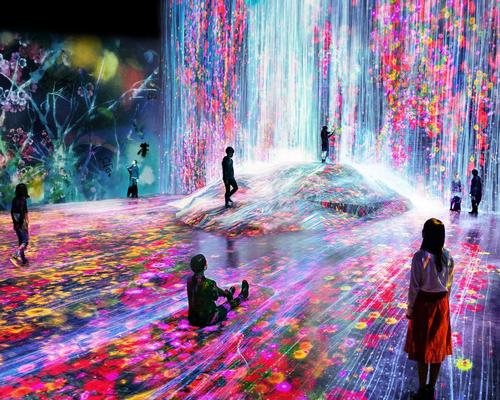18 Jun 2018
World's first 'digital-only art museum' set to wow in Tokyo
BY Kim Megson

Japanese multimedia art collective teamLab will open a unique Digital Art Museum on Thursday (21 June), permanently showcasing all of their dynamic interactive installations for the first time.
The studio have partnered with the Mori Building Company to build the 10,000sq m (107,600sq ft) attraction, called ‘Borderless’, which will exhibit more than 50 interactive artworks across five zones.
There are no divisions between the pieces, which extend beyond their rooms, into the corridors and merge with other works to create a space where “boundaries are in continuous flux’.
“Currently, there aren’t any digital-only art museums,” teamLab founder Toshiyuki Inoko told CLADglobal. “We wanted to create an exhibition that delivers a borderless artwork world, and figured we needed to establish a museum in order to make that happen.
“There are 520 computers, 470 projectors, an overwhelming scale and a completely new world characterised by complex and three-dimensional space. We’re aiming for this to be a unique destination that will enhance the appeal of Tokyo leading up to the 2020 Tokyo Olympics and beyond.”
Among the exhibits are teamLab favourites, previously shown around the world, including the ’Forest of Lamps’, the ‘Multi-Jumping Trampoline Universe’, the ‘Sketch Aquarium’ (where children's drawings of sea creatures appear in a large water ‘tank’) and their ‘Untitled’ waterfall of light.
teamLab is made up of about 500 members, including artists, programmers, architects, designers, CG animators, engineers and mathematicians.
In his own words
Toshiyuki Inoko on what digital art offers that traditional art does not
“We want to change the relationship between people and art, and we want to make people feel that the presence of others is a positive experience when interacting with our artwork. Traditional media, such as paintings, doesn’t change in relation to the presence of viewers or their behaviour. The artwork is based on a relationship with an individual viewer. For the majority of art up until now, the presence of other people tends to constitute a hindrance. If you happen to find yourself alone at an exhibition, you consider yourself to be very lucky.
“When an artwork changes based on the presence or behaviour of people, it blurs the boundaries between artwork and viewer. In this case, the viewer becomes part of the artwork. Similarly, when the artwork changes due to the presence of others, those people also become part of the art. This changes the relationship between an artwork and an individual into a relationship between an artwork and a group of individuals.
“Whether a viewer was present five minutes ago, or how the person next to you is behaving now, suddenly becomes important.”
A feature interview with Inoko featured in the most recent issue of our quarterly print title CLADmag. You can read it here.
Close Window